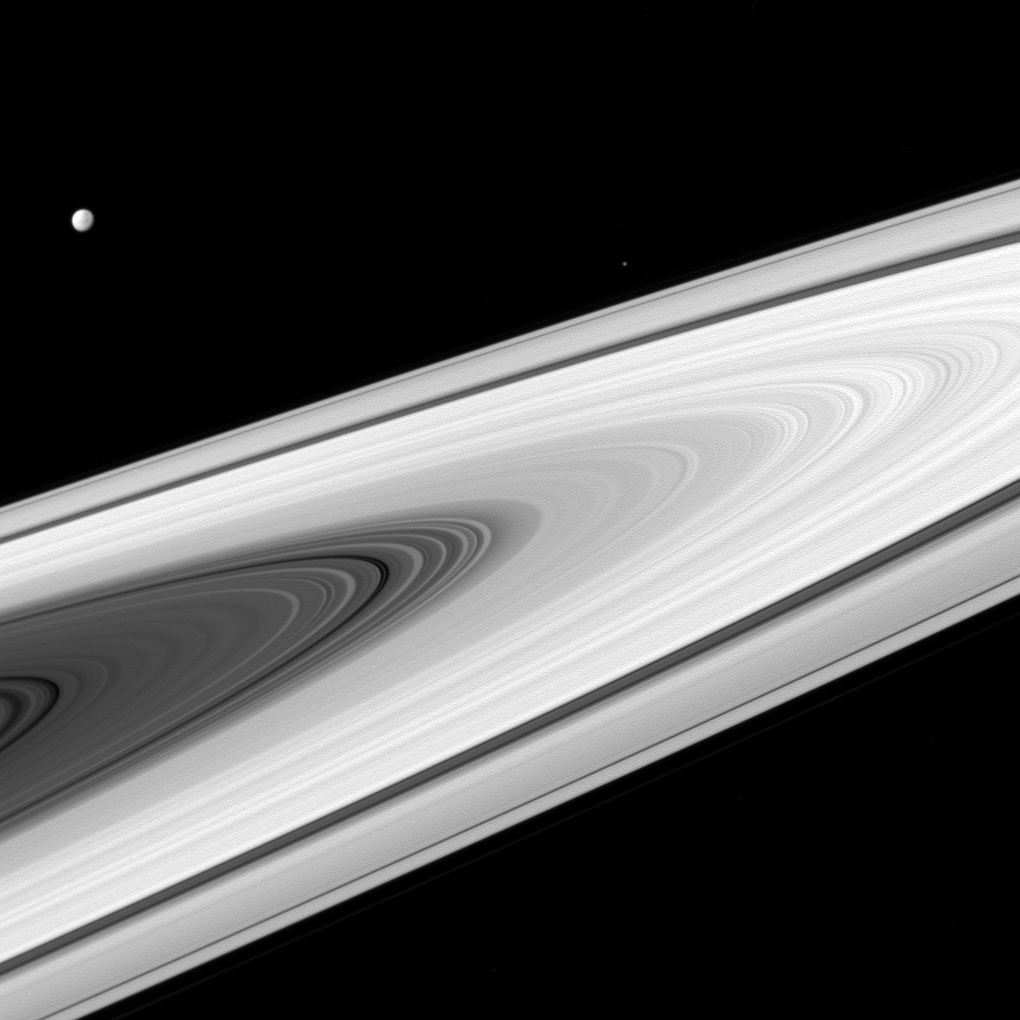Not Really Starless at Saturn

| PIA Number | PIA20489 |
|---|---|
| Language |
|
Saturn's main rings, along with its and moons, are much brighter than most stars. As a result, much shorter exposure times (10 milliseconds, in this case) are required to produce an image and not saturate the detectors of the imaging cameras on NASA's Cassini spacecraft. A longer exposure would be required to capture the stars as well. Cassini has captured stars on many occasions, especially when a target moon is in eclipse, and thus darker than normal. For example, see Starry Night .
Dione (698 miles, 1123 kilometers across) and Epimetheus (70 miles, 113 kilometers across) are seen in this view, above the rings at left and right respectively.
This image looks toward the sunlit side of the rings from about 3 degrees above the ring plane. The image was taken in visible light with the Cassini spacecraft wide-angle camera on April 2, 2016.
The view was obtained at a distance of approximately 257,000 miles (413,000 kilometers) from Saturn and at a Sun-Saturn-spacecraft, or phase, angle of 34 degrees. Image scale is 15 miles (25 kilometers) per pixel.
The Cassini mission is a cooperative project of NASA, ESA (the European Space Agency) and the Italian Space Agency. The Jet Propulsion Laboratory, a division of the California Institute of Technology in Pasadena, manages the mission for NASA's Science Mission Directorate, Washington. The Cassini orbiter and its two onboard cameras were designed, developed and assembled at JPL. The imaging operations center is based at the Space Science Institute in Boulder, Colorado.
For more information about the Cassini-Huygens mission visit http://saturn.jpl.nasa.gov and http://www.nasa.gov/cassini. The Cassini imaging team homepage is at http://ciclops.org.
Image Credit: NASA/JPL-Caltech/Space Science Institute
